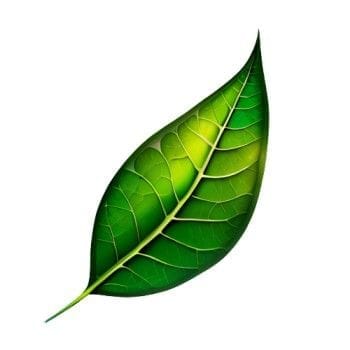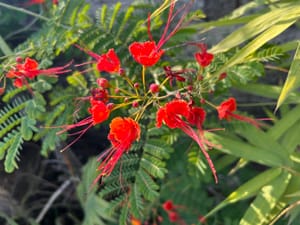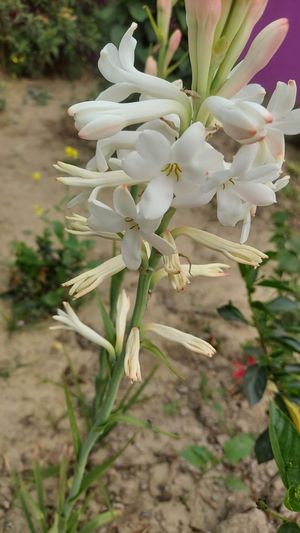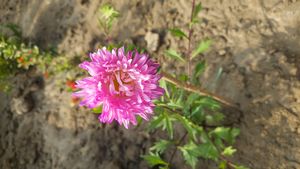
SunPatiens and Vinca can make your garden beautiful. If you really want to know the differences between these two, you need to learn their general key points, and I am here to show you with tables. If you can pick any one of SunPatiens and Vinca then this article is for you. I will help you choose the best one suited for your garden.
Blooming Season of SunPatiens and Vinca - Comparison
Let's understand their blooming habits.
| USDA Zone | SunPatiens Blooming Season | Vinca Blooming Season |
|---|---|---|
| Zone 3-4 | Late Spring to Early Fall | Summer |
| Zone 5-6 | Late Spring to Fall | Late Spring to Early Fall |
| Zone 7-8 | Spring to Late Fall | Spring to Fall |
| Zone 9-10 | Year-round | Spring to Late Fall |
| Zone 11+ | Year-round | Year-round |
Those who are growing vinca in their garden, can raise a question like this "I have seen vinca flowering year-round in zone 10, why did you say blooming season is spring to late fall?" Let me clear this for you, the blooming season I mentioned is when they perform their best.
There are a few variants of SunPatiens, resembling the blooms with Vince blooms. But if you look at the leaves, they are completely different. Impatiens and SunPatiens are not the same. SunPatiens is the Hybrid version of Impatiens.
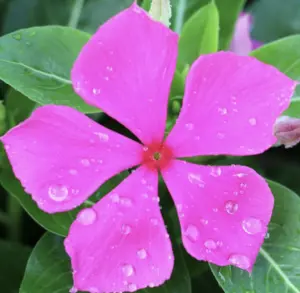
This looks almost the same as Vinca, but this is not a Vinca flower, this is SunPatiens.
Difference Between SunPatiens and Vinca
| Characteristic | SunPatiens | Vinca |
|---|---|---|
| Botanical Family | Impatiens (Impatiens hawkeri hybrid) | Dogbane (Catharanthus roseus) |
| Light Requirements | Full sun to partial shade | Full sun to partial shade |
| Heat Tolerance | High heat tolerance | Very high heat tolerance; withstands dry conditions well |
| Watering Needs | Requires consistent moisture, especially in sunny areas | Drought-tolerant; prefers drier soil between waterings |
| Foliage | Dark green, glossy leaves | Glossy, leathery leaves with a waxy appearance |
| Blooming Season | Late spring to frost, or year-round in warm climates | Spring to frost, or year-round in warm climates |
| Flower Colors | Wide variety (red, pink, white, purple, coral, etc.) | Primarily pink, white, purple, and red |
| Growth Habit | Compact and bushy | Compact to slightly sprawling |
| Ideal Uses | Beds, borders, containers, and hanging baskets | Beds, borders, containers, and ground cover |
| Pest and Disease Resistance | Good resistance to pests and diseases, especially mildew | Very resistant to pests; susceptible to some fungal diseases |
See how they look like ( Photos of Vinca and SunPatiens)
Now it's time to see some photos (you are waiting for)
I will mention the flower's name in the caption of the photo.
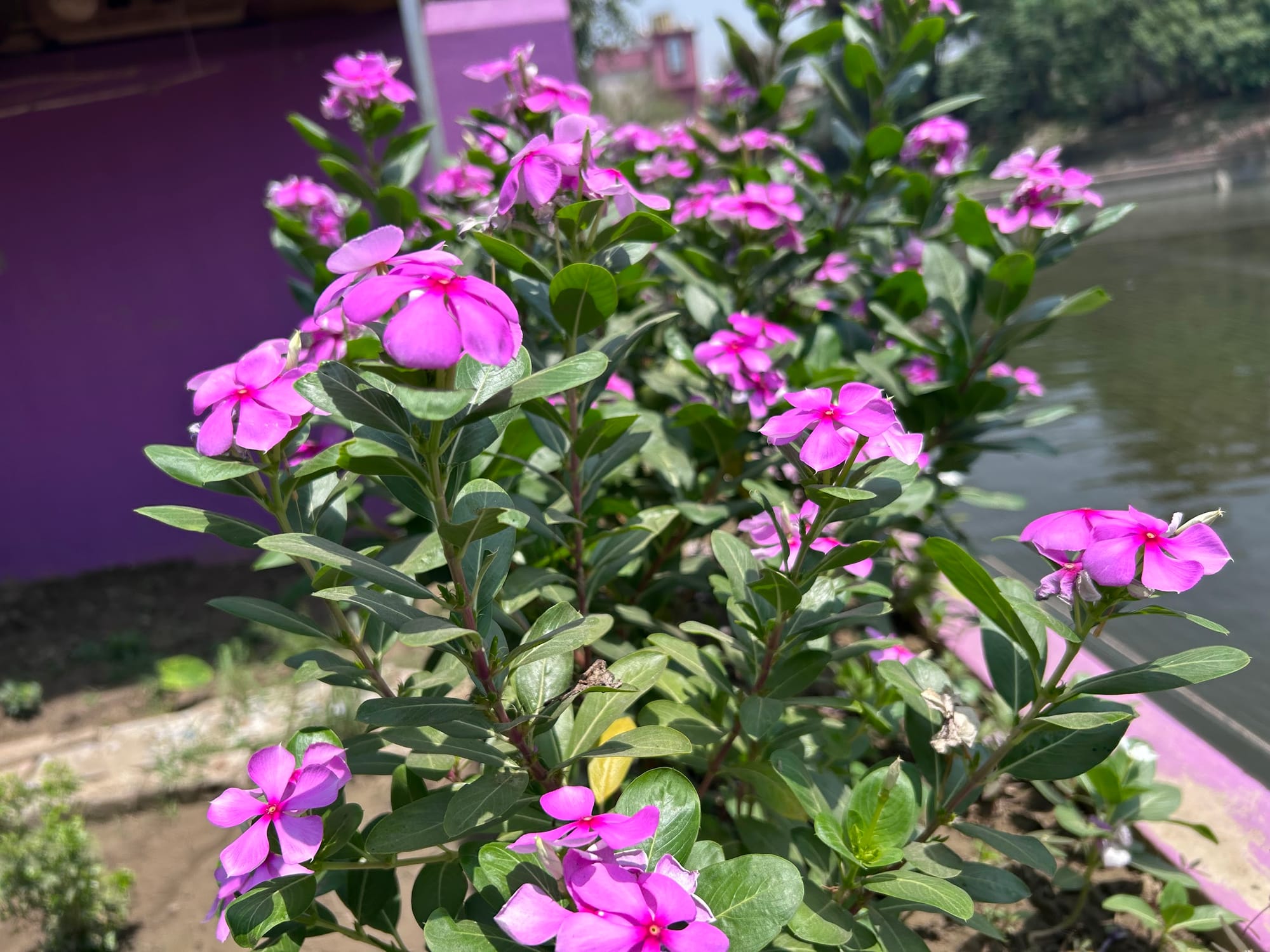
The color you are seeing here is the most common color of Vinca flower. These vinca plants are grown from seeds on their own. For the experiment, I didn’t provide any care or watering.
You can plant it in a pot or on the ground. You can see a lot of baby vinca plants below the parent plant in the next growing season after blooming.
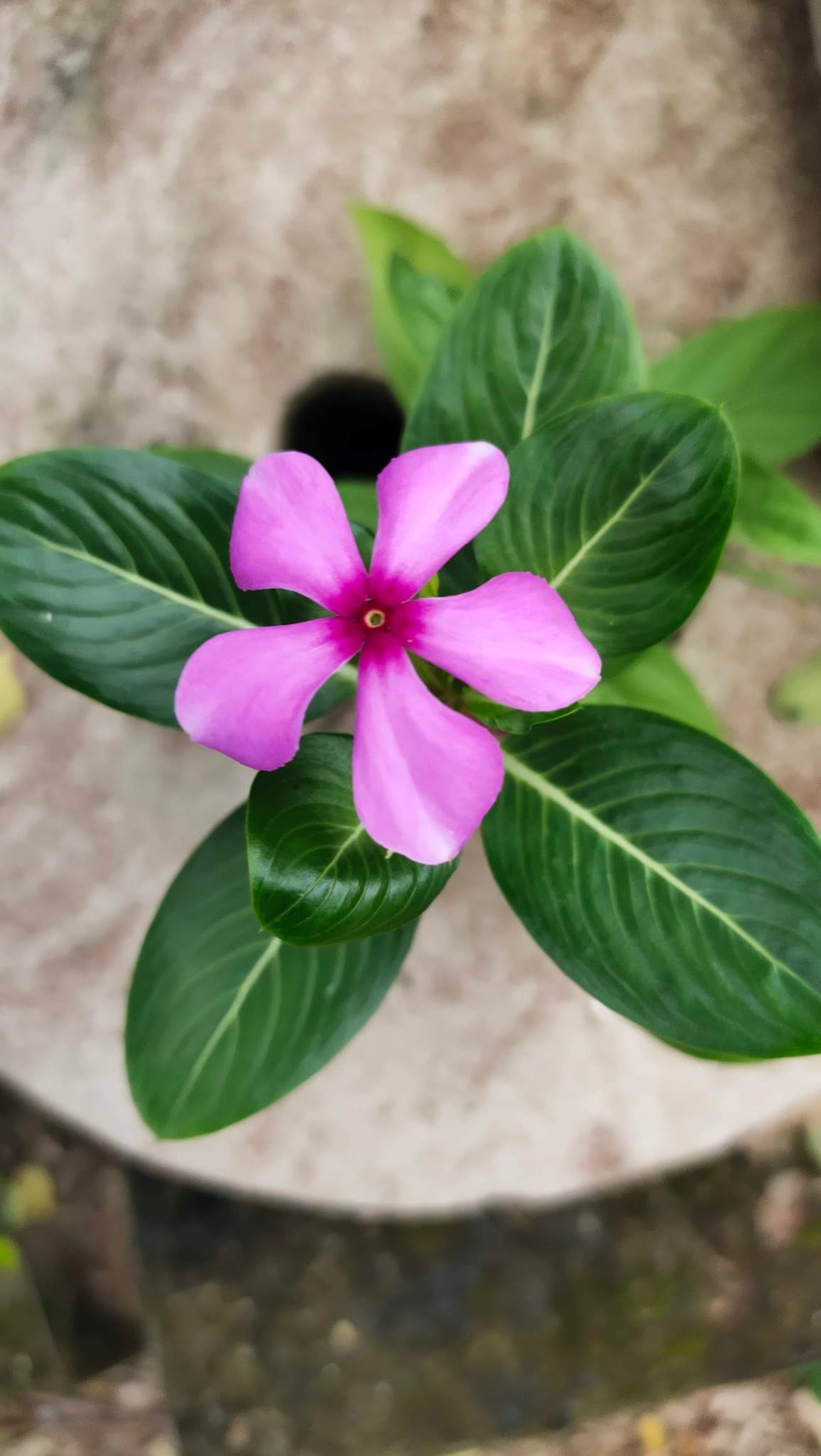
SunPatiens's leaves are completely different.
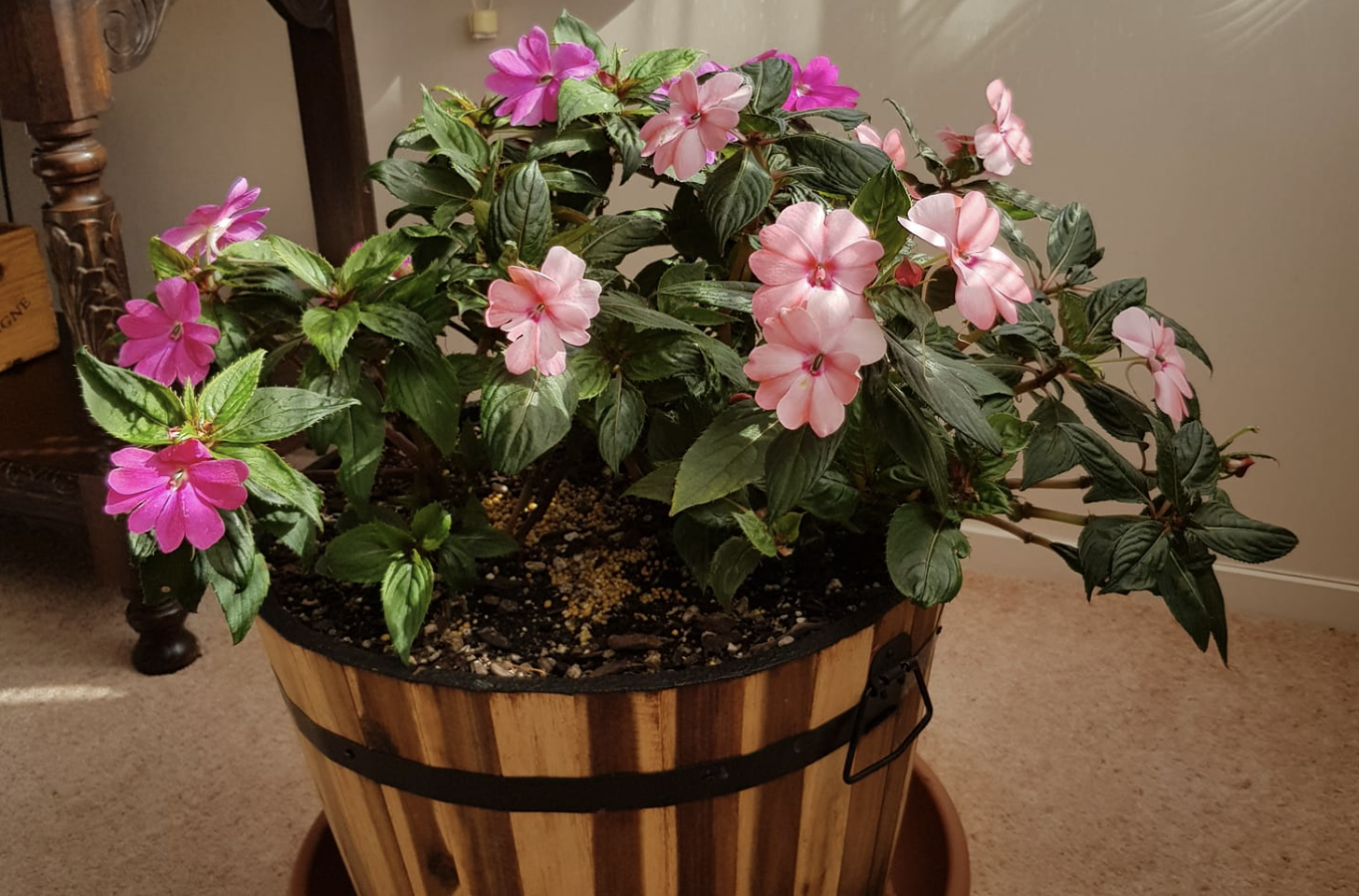
This is not a normal variant that we usually see in the nurseries.
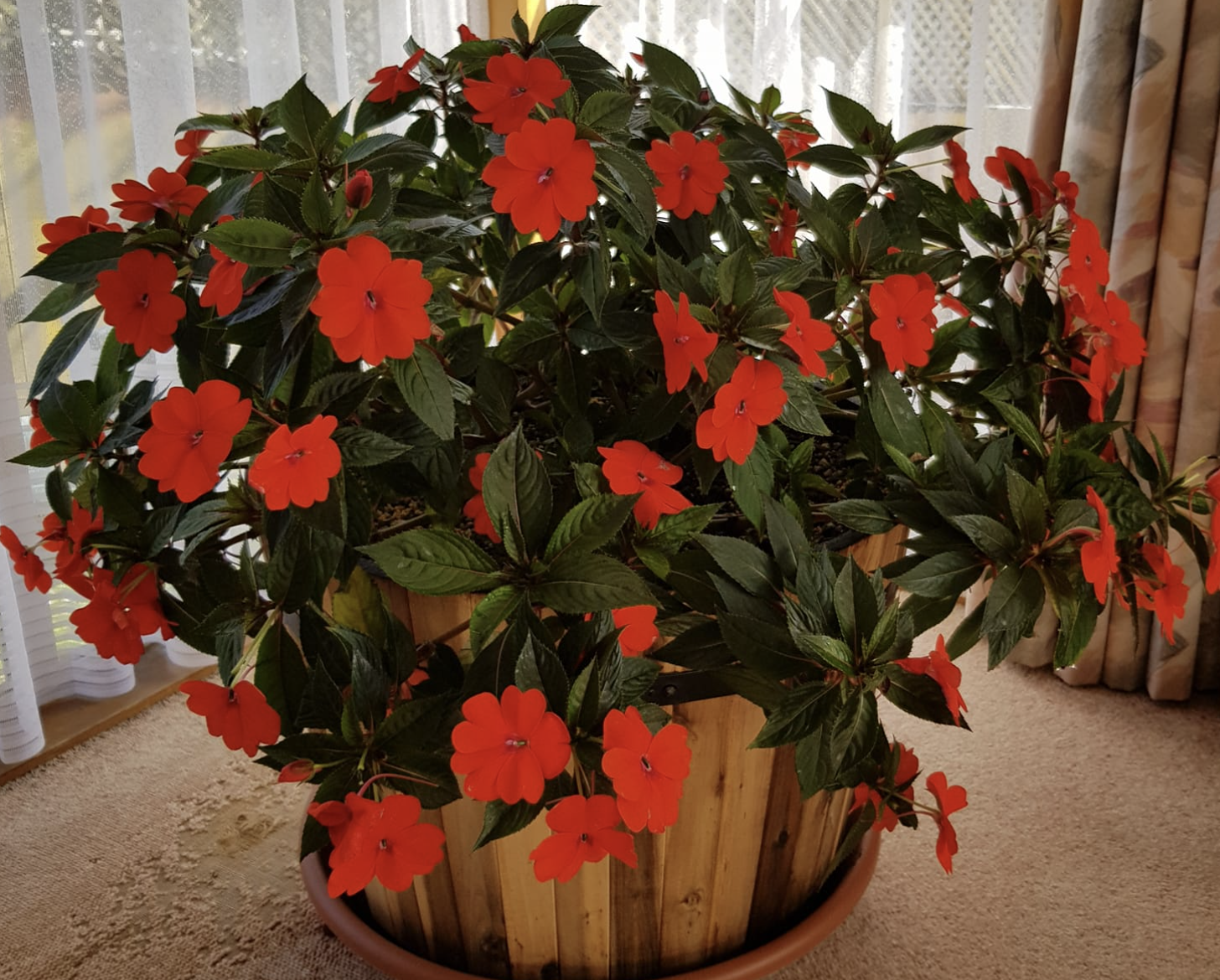
And this red SunPatiens is the most common color.
If you are fond of white flowers then Vinca will be a good choice for you as it comes in white color as well.
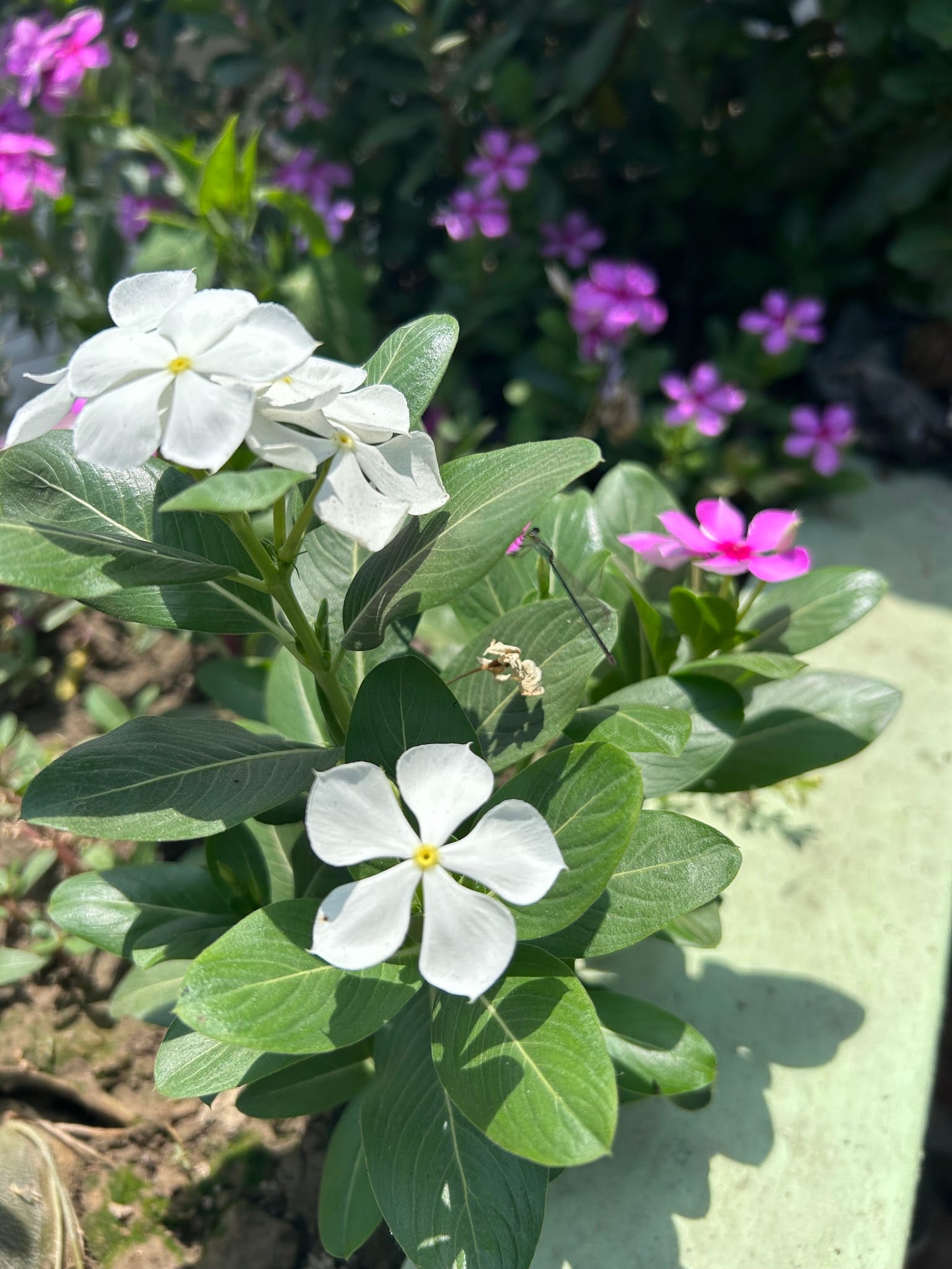
So what should you choose? Vinca or SunPatiens?
If you are a lazy gardener and don't have enough time to care for or water your plants, go for Vinca. Plant once and forget.
Note: I am talking about warmer climates. If you are from a colder region where frost is normal, you need to take extra care.
SunPatiens needs some extra care but they are more eye-catching. The petals are a bit bigger than Vinca's petals.
Based on my gardening style, I chose to plant both, but in different locations. I love to plant SunPatiens on the side of walkways and Vincas near the fences (but I need to make sure they are getting enough sunlight).
Let me know what you choose to plant in the comment below.
